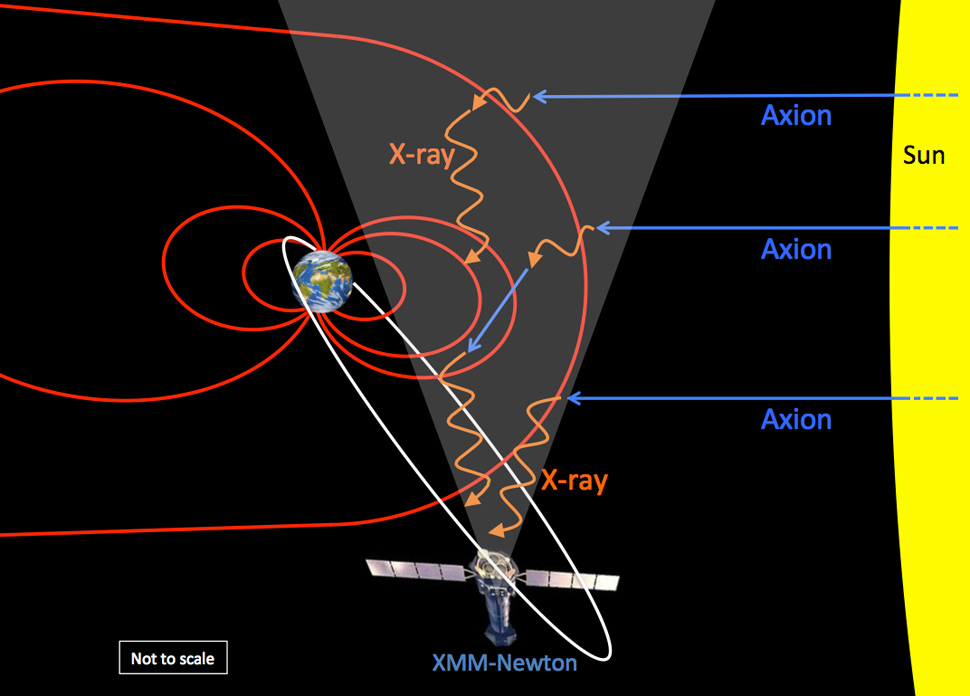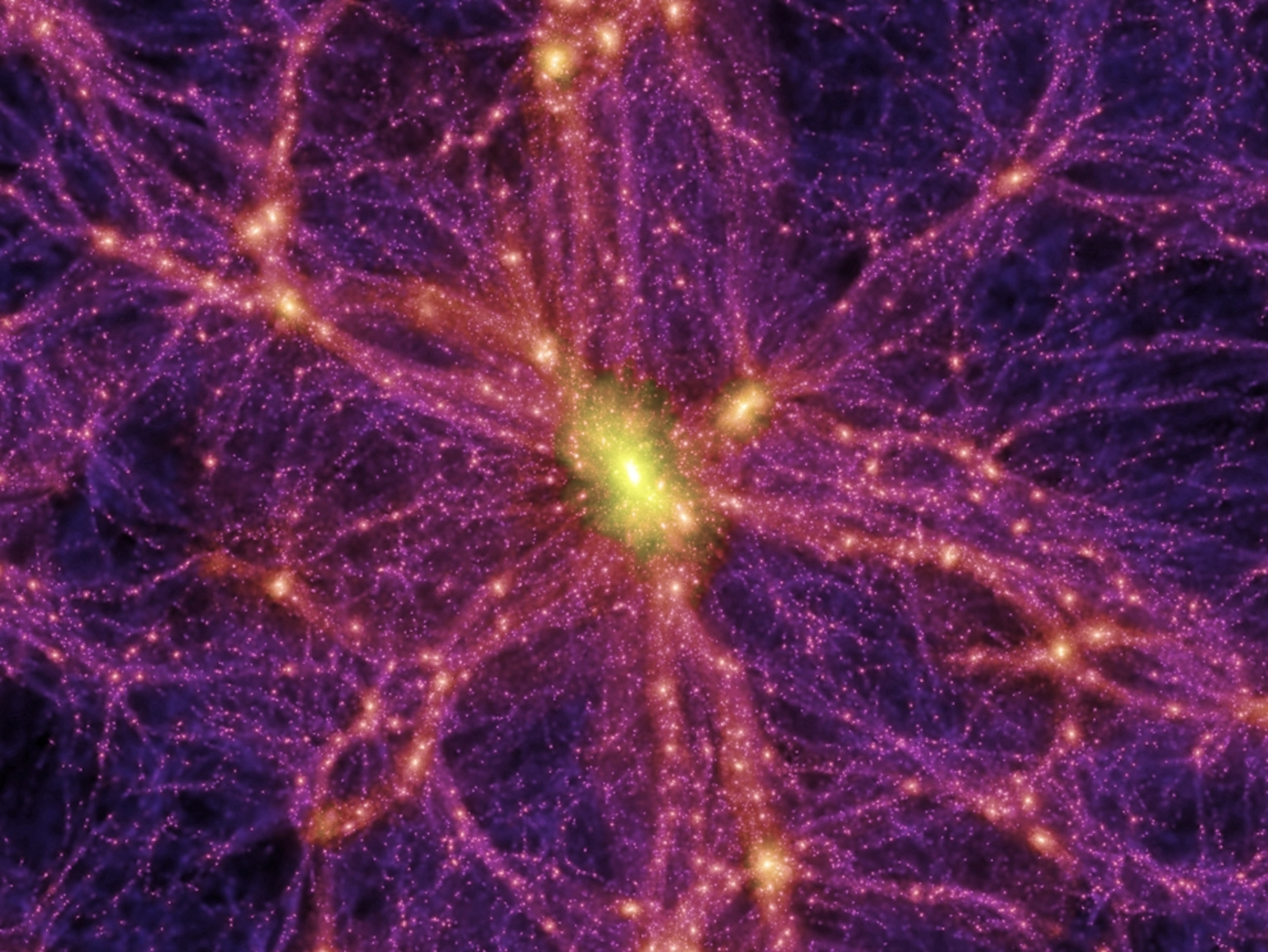Axions are fascinating theoretical particles hypothesized to address one of the biggest mysteries in particle physics: the elusive nature of dark matter. This enigmatic substance is believed to account for approximately 85 percent of the universe’s mass, yet it remains undetectable. Recent research has advanced the quest for axions, shedding light on their potential role as fundamental building blocks of the cosmos. These particles, alongside quasiparticles, could revolutionize our understanding of not only the universe’s composition but also pave the way for groundbreaking innovations in quantum technologies. As scientists delve deeper into the study of axions, the implications of these cosmological discoveries could unlock a new era in the field of physics.
The pursuit of axionic particles, often described as hypothetical constituents of dark matter, is gaining momentum in the scientific community. These peculiar entities are thought to fill the void in our comprehension of the cosmos, particularly in the realm of particle physics. By investigating axions and their interactions, researchers aim to uncover the hidden aspects of the universe’s structure. Furthermore, the exploration of quasiparticles as tools for probing these elusive particles could lead to significant advancements in quantum technologies. As we continue to explore concepts like dark matter and its potential constituents, our understanding of the fundamental fabric of reality may be on the brink of a transformative shift.
Understanding Axions: A Key to Dark Matter
Axions have emerged as one of the leading candidates in the search for dark matter, the elusive substance that makes up a significant portion of the universe’s mass. Theoretical physicists have long speculated about the existence of axions, which could shed light on the properties of dark matter and its interactions within the cosmos. While they remain unobserved as particles, recent research suggests that axions may hold the key to answering fundamental questions in particle physics, especially concerning the structure and behavior of dark matter.
In a groundbreaking study, researchers have developed innovative methods to detect axions indirectly by utilizing quasiparticles. This approach transforms theoretical concepts into tangible results, allowing scientists to explore the interactions of axion quasiparticles within various materials. By understanding how these quasiparticles behave under specific conditions, physicists hope to validate the existence of axions and their role in the universe. This research not only enhances our grasp of dark matter but also paves the way for future cosmological discoveries.
Quasiparticles: The Bridge to Axion Detection
Quasiparticles serve as a bridge between theoretical physics and practical experiments, particularly in the hunt for axions. By leveraging quasiparticles, scientists can create conditions that mimic the presence of axions, thereby facilitating observations that would be impossible to achieve with direct detection methods. This innovative approach involves the manipulation of materials like manganese bismuth telluride, which exhibits unique electronic and magnetic properties conducive to quenching axion quasiparticles. Through precise nano-fabrication, researchers can tune these materials to enhance their quantum characteristics.
The ability to create axion quasiparticles offers a promising avenue for future technological advancements. The dynamics of these quasiparticles could lead to groundbreaking applications, including an advanced dark matter detector, often likened to a ‘cosmic car radio.’ By fine-tuning the radio frequencies emitted by axions, researchers can significantly improve the sensitivity and accuracy of dark matter detection. This intersection of quantum technologies and particle physics not only invigorates the field but also inspires new directions for research in cosmology and fundamental physics.
The Role of Laser Techniques in Axion Research
Lasers play a critical role in the exploration of axions and their associated quasiparticles. In recent experimental setups, researchers implemented ultrafast laser optics to investigate the dynamics of axion quasiparticles in manganese bismuth telluride. This state-of-the-art technique allows scientists to capture fleeting phenomena and observe interactions in real-time, effectively converting abstract theories into observable events. The precision of laser manipulation enables researchers to probe the properties of these particles, offering insights into their potential as dark matter candidates.
As the research progresses, improvements in laser technologies may further enhance the capacity to detect axion signals. By adjusting laser parameters to closely match the expected frequencies emitted by axions, scientists can refine their detection methods and potentially unveil new interactions that could provide more concrete evidence of dark matter’s existence. The synergy between laser physics and particle physics illustrates the interdisciplinary nature of modern scientific research, where advancements in one field catalyze breakthroughs in another.
Theoretical Foundations: Axions in Particle Physics
The theoretical foundation of axions can be traced back to the early formulations of particle physics that sought to unify the fundamental forces of nature. Frank Wilczek, the Nobel Prize-winning physicist, proposed axions in the context of solving the strong CP problem in quantum chromodynamics. As researchers explore the properties and interactions of axions, they are not only investigating their role in the cosmos but also delving deeper into the theoretical underpinnings of particle physics.
The implications of discovering axions extend beyond dark matter; they can provide essential insights into the very fabric of the universe. The significance of axions lies in their potential ability to beautify the fundamental equations of physics, offering a resolution to some of the mysteries inherent in our understanding of matter and energy. As scientists continue to reconcile theoretical predictions with experimental results, the search for axions might also illuminate broader questions about the origins and evolution of the universe.
Collaborative Research Efforts in Axion Studies
The quest to understand axions has prompted a collaborative effort among researchers across multiple institutions, including Harvard, King’s College London, UC Berkeley, and various others. This interdisciplinary approach combines expertise from condensed matter physics, material chemistry, and high-energy physics to tackle the challenges of axion detection. By pooling resources and knowledge, these teams can harness advanced technologies and theoretical frameworks to advance the frontiers of particle physics.
Such collaborations enhance the efficiency of research projects aimed at confirming the existence of axions. By integrating diverse perspectives and methodologies, researchers can develop robust experimental designs and innovative solutions to longstanding challenges in particle physics. This collaborative environment also fosters ingenuity, leading to novel discoveries and advancements in quantum technologies that could reshape our understanding of the universe.
Harnessing Quantum Materials for Future Discoveries
The exploration of axions is inherently linked to the study of quantum materials, which exhibit unique properties that can be manipulated to observe quasiparticles. Researchers have focused on materials like manganese bismuth telluride, which enables the creation of conditions for axion quasiparticle formation. The ability to engineer quantum states within these materials not only paves the way for axion detection but also unlocks potential applications in quantum computing and other cutting-edge technologies.
Harnessing quantum materials represents a significant frontier in the pursuit of a deeper understanding of fundamental physics. As researchers refine their ability to control and manipulate these materials, it could lead to transformative breakthroughs in both particle physics and technology. The marriage of quantum science and particle research signals an exciting era where advances in one field stimulate progress in the other, possibly resulting in new insights into the nature of dark matter.
The Future of Dark Matter Research: Axions
With dark matter constituting approximately 85% of the universe’s mass, the search for its constituents is among the most pressing questions in modern physics. Researchers are optimistic that the discovery of axions could provide a missing piece to this cosmic puzzle. By tuning into specific frequencies associated with axion particles, scientists are closing in on techniques to detect dark matter that have eluded previous technology. The next decade could be pivotal, with advancements in research suggesting a breakthrough may be within reach.
As dark matter research progresses, collaborations between different scientific disciplines will be crucial. The multidisciplinary approach, integrating fields such as astrophysics, particle physics, and materials science, can foster innovative methodologies and tools necessary for deepening our understanding of dark matter. The exciting progress surrounding axion research symbolizes a larger shift toward uncovering the universe’s mysteries and resolving fundamental questions that have stumped scientists for generations.
Innovations in Detection Methods for Axions
Recent innovations in detection methods represent a significant advancement in the quest to confirm the existence of axions. By employing cutting-edge techniques that integrate quasiparticles and advanced laser systems, researchers are exploring the dynamics of axion interaction with condensed matter. These innovations not only enhance the detection capabilities but also improve the precision of experiments aimed at identifying dark matter signals.
As scientists hone their methodologies, the potential for discovering axions increases. The emergence of new technologies that allow for improved sensitivity and accuracy in detecting the subtle effects of dark matter may lead to a breakthrough in the field. The pursuit of axions, once considered overly ambitious, is now gaining momentum due to these innovative detection techniques, reaffirming the relevance of theoretical physics in modern scientific inquiry.
The Interplay of Cosmology and Particle Physics
The relationship between cosmology and particle physics is becoming increasingly intricate, especially in the context of dark matter research. Theoretical studies surrounding axions offer crucial insights into how the universe behaves on both a cosmological and quantum scale. As researchers strive to identify the particles that constitute dark matter, they are simultaneously investigating the ways these particles interact with the cosmos, informing our understanding of the universe’s evolution.
This interplay highlights the importance of developing theoretical frameworks that can accommodate emerging experimental data. As discoveries are made regarding axions and their role in dark matter, the implications for cosmological models will continue to unfold, potentially leading to paradigm shifts in our comprehension of the universe. By bridging the gap between cosmology and particle physics, researchers can forge new avenues for scientific exploration, ultimately enriching our understanding of fundamental principles governing the cosmos.
Frequently Asked Questions
What are axions and why are they important for dark matter research?
Axions are hypothetical particles proposed to explain the nature of dark matter, the mysterious substance that constitutes a significant portion of the universe’s mass. They are essential in particle physics because confirming their existence could provide profound insights into cosmological discoveries and the underlying structure of the universe.
How do axions relate to quasiparticles in recent research?
Recent advancements in research have utilized quasiparticles that simulate the behavior of axions to explore their properties. These axion quasiparticles serve as potential detectors for actual dark matter axions, enabling scientists to better understand the dynamics of dark matter.
What experimental methods are being used to detect axions?
Researchers are employing precision techniques, including ultrafast laser optics, to study axion quasiparticles in materials like manganese bismuth telluride. By tuning into specific frequencies emitted by these quasiparticles, scientists aim to detect signals from dark matter axions that have previously eluded detection.
What breakthroughs have been made in the study of axions?
A significant breakthrough has occurred with the demonstration of axion quasiparticles, which showcase coherent behavior that affirms theoretical predictions in condensed matter physics. This research paves the way for future technological applications and improved methods for detecting dark matter.
How could axion research influence quantum technologies?
The exploration of axion quasiparticles could lead to novel applications in quantum technologies, particularly through the development of axion polaritons. These interactions between light and matter may enable advancements in optical applications and enhance our ability to detect dark matter.
What challenges exist in the research of axions and dark matter?
Researchers face challenges such as the need for precise experimental conditions and the inherent difficulty in manipulating sensitive materials like manganese bismuth telluride. Overcoming these challenges is critical for advancing the search for axions, which could illuminate facets of dark matter.
What impact could confirming the existence of axions have on particle physics?
Confirming axions would revolutionize particle physics by solving important questions regarding dark matter and the universe’s composition. It would also validate theoretical frameworks that unify particle physics with cosmological phenomena, potentially leading to new physics beyond the Standard Model.
How long do scientists estimate it will take to detect dark matter axions?
The research team believes that with their current methodologies, they may be able to detect dark matter axions within the next 15 years, significantly advancing our understanding of dark matter and its cosmic role.
What is the significance of the researchers’ interdisciplinary approach in axion studies?
The interdisciplinary collaboration among condensed matter physics, material chemistry, and high-energy physics has significantly enhanced the study of axions, showcasing how quantum materials can contribute to solving fundamental questions in particle physics and cosmology.
How do axions contribute to our understanding of the universe’s history?
Axions, as possible constituents of dark matter, could shed light on the makeup and evolution of the universe. Understanding axions may help researchers decode the mystery of dark matter and its influence on cosmic structures and phenomena.
| Key Point | Details |
|---|---|
| Axions as Dark Matter Candidates | Axions are theoretical particles proposed to explain the nature of dark matter, which constitutes most of the universe’s mass. |
| Groundbreaking Experiment | Harvard and King’s College London researchers made significant progress in confirming the existence of axions using quasiparticles. |
| Axion Quasiparticles | These are simulations of axions that can be used as detectors to confirm the presence of actual axion particles. |
| Significant Material Used | The researchers utilized manganese bismuth telluride, a unique material suitable for nurturing axion quasiparticles. |
| Measurement Techniques | Innovative measurement tools and ultrafast laser optics revealed the dynamics of axion quasiparticles. |
| Future Prospects | The researchers aim to develop refined experiments for further exploration of axion dark matter. |
Summary
Axions are a thrilling frontier within the realm of particle physics, at the core of understanding dark matter. This recent research marks a pivotal moment in confirming the existence of axions, potentially altering our understanding of the universe’s composition. With a focus on utilizing advanced techniques and materials, scientists are inching closer to unlocking the mysteries that surround dark matter. The continued exploration of axion quasiparticles not only paves the way for potential breakthrough discoveries but also underscores the importance of interdisciplinary approaches in modern scientific research.



